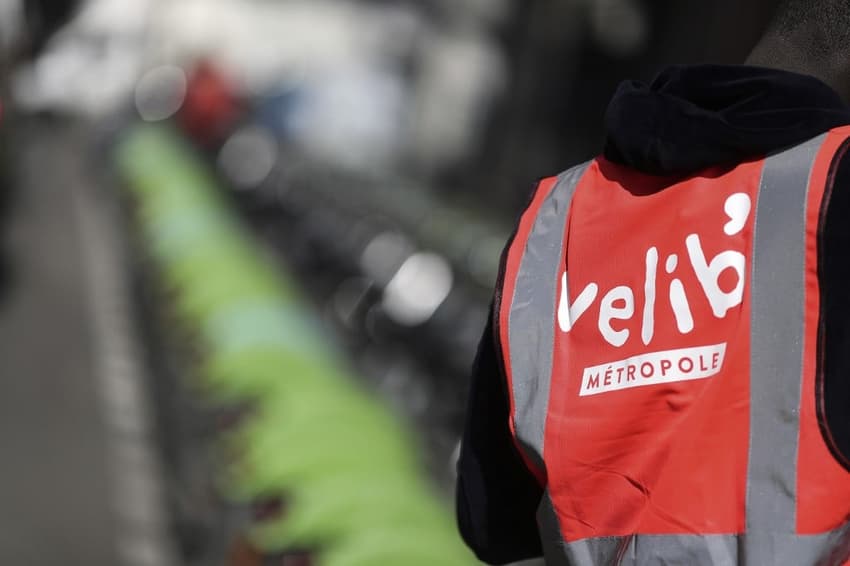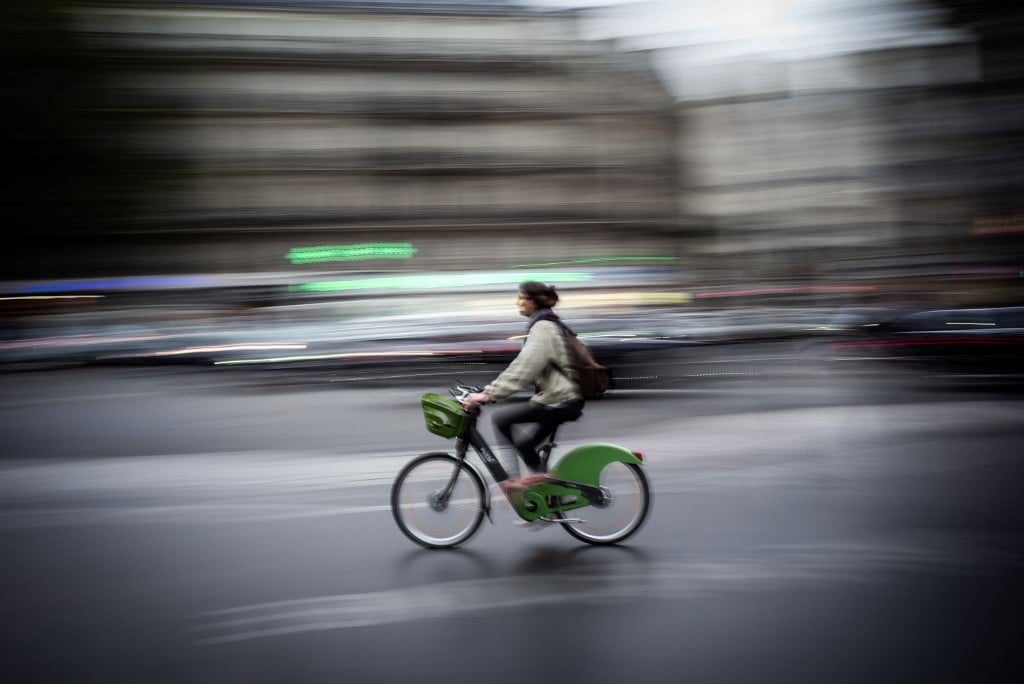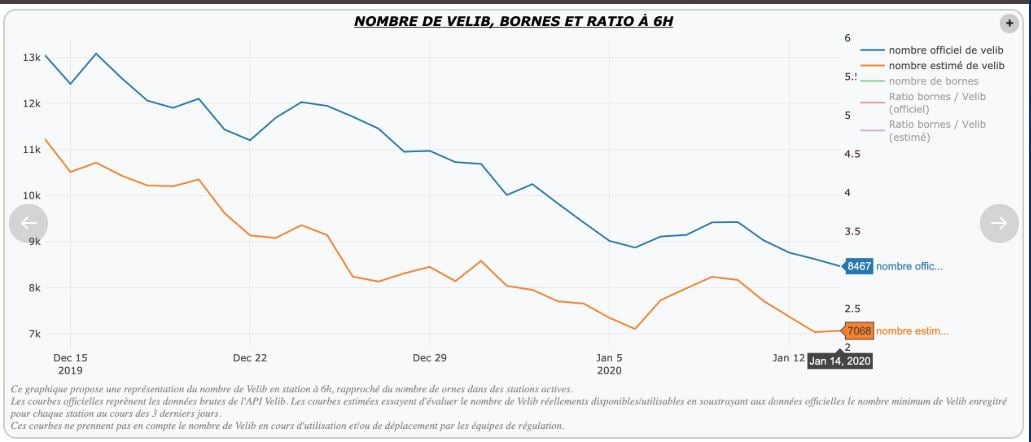Has the Paris bike share system Vélib' risen to the challenge of strikes?

Massive disruption on public transport should have been a golden opportunity for Paris' Vélib' bike share scheme - but was it up to the challenge?
During almost seven weeks of strike action that seriously disrupted transport in the capital, many Parisians seeking alternative means of transport flocked to the city's public bicycle sharing system known as the Vélib'.
The system, which offers access to manual and electric two-wheelers stationed all over the capital, proved one of the most efficient ways to get around while Metro, bus and tram services were reduced to a bare minimum.
At first, the Vélib' seemed up to the task. The Vélib’Metropole system had been refurbished only a year earlier and the new, lighter green bicycles were now accompanied by electrical blue ones.
Smovengo, the company in charge of Vélib’Metropole, even tempted first-time subscribers with a special first-month-free offer if they signed up between November 21st and December 15th.
READ ALSO: Five surprising consequences of France's transport strikes
But as the weeks passed and strikes continued, the Vélib' seemed to buckle under the mounting pressure.
33 vélibs - all broken or impossible to unlock. And that’s after 40 minutes of scouting the stations in the city centre that had bikes left. Are the strikes (not so) slowly killing the Paris #vélib system? #GreveGenerale pic.twitter.com/62kuKScRfo
— Ingri Bergo (@ingribergo) January 14, 2020
And now, as the capital's main transport union Unsa announced it would put an end to the strikes, the fatigue among Vélib' users was palpable.
“Often all the bicycles are broken, or there aren’t any left at the station,” said Eros, 16, as he parked his Vélib' on a station near Jaurès, in north east Paris. The four already parked bicycles were all broken.
“Sometimes I’m so desperate that I take one with a flat tire,” said Liona, a 24-year-old actress who was waiting for Eros to put his still-functioning bicycle back so that she could use it.
“It’s horrible. I’m late all the time because of this,” she said.
Every morning during the strikes, Liona would leave her apartment in the 3rd arrondissement, central Paris, only to find that the few bicycles left on the stations in her neighbourhood would be broken.
She would walk from station to station in search of a Vélib' she could use. Sometimes she jumped on a bus to get closer to a station recommended to her by the app on her phone.
Once, she realised too late that the brakes on the Vélib' she had taken didn’t work.
“It was dangerous, but I didn’t get hurt,” she said.

The Vélib' has been under heavy pressure during the transport strikes. Photo: AFP
Liona and Eros were far from the only disgruntled Vélib' users in the capital.
As they were speaking to The Local, at least four people approached the station, checked out the state of the remaining bicycles, sighed and left.
The constant Vélib shortages sparked Elliot Lepers, a French designer, to dig into the raw data of the city's own site to find out how many bicycles were actually in service during the strikes.
In the Twitter thread below, Lepers dissected the on-the-ground Vélib' situation on one single day (January 14th), to explain how many Vélib' were out of service and what caused it.
Le site https://t.co/ZbS4gDF45Y mesure le nombre de vélos qui ne bougent pas pendant plus de 3 jours pour estimer le nombre de vélos défectueux dans chaque station. Selon ce site, il y avait 11233 vélos disponibles mi-décembre, 7068 aujourd’hui. pic.twitter.com/RiL1BSj6XR
— Elliot Lepers (@ElliotLepers) January 14, 2020
"In December 2019, according to the official site, the circulating Vélib' numbered a little more than 13,000. Today, at 6 am, there were 8,467 Vélib' available on the stations," he wrote.
Due to the strikes, the surge in the number of broken bicycles was accompanied by a decrease in the number of Vélib' repairing personnel, Lepers told The Local on Monday, January 20th.
Lepers said that the Vélib' had been "steadily degrading" since the beginning of December, when the strikes began.
"It was an important crash-test for the Vélib'," he said.
Source: Vélib.philibert.info
Since the beginning of the strikes, the number of Vélib users more than doubled, according to the Vélib'Metropole.
Mid-January, Vélib subscribers received an email titled “Where are the Vélibs?”, in which the company explained that “more than 80,600 people" were using the Vélib’ "every day."
“During peak hours, that means more than four Vélib’ are picked up from a station every second,” the email stated.
Up to 700 bicycles had to be repaired every day, according to a tweet published by Vélib’Metropole.
ℹ️ Pour mettre à votre disposition un maximum de vélos, nos équipes de maintenance effectuent jusqu'à 700 réparations par jour. 300 sont réalisées directement en station et 400 dans nos ateliers. ?♂️#Vélib #Ilsfontvélib #teamwork pic.twitter.com/lYHV1g89Zv
— Vélib' (@Velib) January 17, 2020
The city's mayor Anne Hidalgo has long been a champion of cycling, and as thousands of Parisians took the bikes during the strikes, the hope was that some would discover the joys of cycling and remain as two-wheeled commuters.
But if Vélib' wants to keep the new customers it gained during the strike, reliability, supply and the rapid repair of damaged vehicles will be key.
Une amie me rappelait cette campagne contre les incivilités faites aux @Velib dessinée par Cabu il y a plusieurs années. Elle reste d’actualité même avec la nouvelle génération du service... prendre soin du bien commun, c’est prendre soin de nous-memes. @Baratti_Elbaz pic.twitter.com/cXu6EYVW9H
— Emmanuel GREGOIRE (@egregoire) January 20, 2020
"According to the stats it seems like it's stabilising," Lepers said, but added that there were not enough Vélib' for all Parisians to use them to work every day.
"The system was never supposed to carry everyone.
"The only way for everyone to bike is if they get their own bicycle."
Comments
See Also
During almost seven weeks of strike action that seriously disrupted transport in the capital, many Parisians seeking alternative means of transport flocked to the city's public bicycle sharing system known as the Vélib'.
The system, which offers access to manual and electric two-wheelers stationed all over the capital, proved one of the most efficient ways to get around while Metro, bus and tram services were reduced to a bare minimum.
At first, the Vélib' seemed up to the task. The Vélib’Metropole system had been refurbished only a year earlier and the new, lighter green bicycles were now accompanied by electrical blue ones.
Smovengo, the company in charge of Vélib’Metropole, even tempted first-time subscribers with a special first-month-free offer if they signed up between November 21st and December 15th.
READ ALSO: Five surprising consequences of France's transport strikes
But as the weeks passed and strikes continued, the Vélib' seemed to buckle under the mounting pressure.
33 vélibs - all broken or impossible to unlock. And that’s after 40 minutes of scouting the stations in the city centre that had bikes left. Are the strikes (not so) slowly killing the Paris #vélib system? #GreveGenerale pic.twitter.com/62kuKScRfo
— Ingri Bergo (@ingribergo) January 14, 2020
And now, as the capital's main transport union Unsa announced it would put an end to the strikes, the fatigue among Vélib' users was palpable.
“Often all the bicycles are broken, or there aren’t any left at the station,” said Eros, 16, as he parked his Vélib' on a station near Jaurès, in north east Paris. The four already parked bicycles were all broken.
“Sometimes I’m so desperate that I take one with a flat tire,” said Liona, a 24-year-old actress who was waiting for Eros to put his still-functioning bicycle back so that she could use it.
“It’s horrible. I’m late all the time because of this,” she said.
Every morning during the strikes, Liona would leave her apartment in the 3rd arrondissement, central Paris, only to find that the few bicycles left on the stations in her neighbourhood would be broken.
She would walk from station to station in search of a Vélib' she could use. Sometimes she jumped on a bus to get closer to a station recommended to her by the app on her phone.
Once, she realised too late that the brakes on the Vélib' she had taken didn’t work.
“It was dangerous, but I didn’t get hurt,” she said.

The Vélib' has been under heavy pressure during the transport strikes. Photo: AFP
Liona and Eros were far from the only disgruntled Vélib' users in the capital.
As they were speaking to The Local, at least four people approached the station, checked out the state of the remaining bicycles, sighed and left.
The constant Vélib shortages sparked Elliot Lepers, a French designer, to dig into the raw data of the city's own site to find out how many bicycles were actually in service during the strikes.
In the Twitter thread below, Lepers dissected the on-the-ground Vélib' situation on one single day (January 14th), to explain how many Vélib' were out of service and what caused it.
Le site https://t.co/ZbS4gDF45Y mesure le nombre de vélos qui ne bougent pas pendant plus de 3 jours pour estimer le nombre de vélos défectueux dans chaque station. Selon ce site, il y avait 11233 vélos disponibles mi-décembre, 7068 aujourd’hui. pic.twitter.com/RiL1BSj6XR
— Elliot Lepers (@ElliotLepers) January 14, 2020
"In December 2019, according to the official site, the circulating Vélib' numbered a little more than 13,000. Today, at 6 am, there were 8,467 Vélib' available on the stations," he wrote.
Due to the strikes, the surge in the number of broken bicycles was accompanied by a decrease in the number of Vélib' repairing personnel, Lepers told The Local on Monday, January 20th.
Lepers said that the Vélib' had been "steadily degrading" since the beginning of December, when the strikes began.
"It was an important crash-test for the Vélib'," he said.
Source: Vélib.philibert.info
Since the beginning of the strikes, the number of Vélib users more than doubled, according to the Vélib'Metropole.
Mid-January, Vélib subscribers received an email titled “Where are the Vélibs?”, in which the company explained that “more than 80,600 people" were using the Vélib’ "every day."
“During peak hours, that means more than four Vélib’ are picked up from a station every second,” the email stated.
Up to 700 bicycles had to be repaired every day, according to a tweet published by Vélib’Metropole.
ℹ️ Pour mettre à votre disposition un maximum de vélos, nos équipes de maintenance effectuent jusqu'à 700 réparations par jour. 300 sont réalisées directement en station et 400 dans nos ateliers. ?♂️#Vélib #Ilsfontvélib #teamwork pic.twitter.com/lYHV1g89Zv
— Vélib' (@Velib) January 17, 2020
Une amie me rappelait cette campagne contre les incivilités faites aux @Velib dessinée par Cabu il y a plusieurs années. Elle reste d’actualité même avec la nouvelle génération du service... prendre soin du bien commun, c’est prendre soin de nous-memes. @Baratti_Elbaz pic.twitter.com/cXu6EYVW9H
— Emmanuel GREGOIRE (@egregoire) January 20, 2020
"The system was never supposed to carry everyone.
"The only way for everyone to bike is if they get their own bicycle."
Join the conversation in our comments section below. Share your own views and experience and if you have a question or suggestion for our journalists then email us at [email protected].
Please keep comments civil, constructive and on topic – and make sure to read our terms of use before getting involved.
Please log in here to leave a comment.